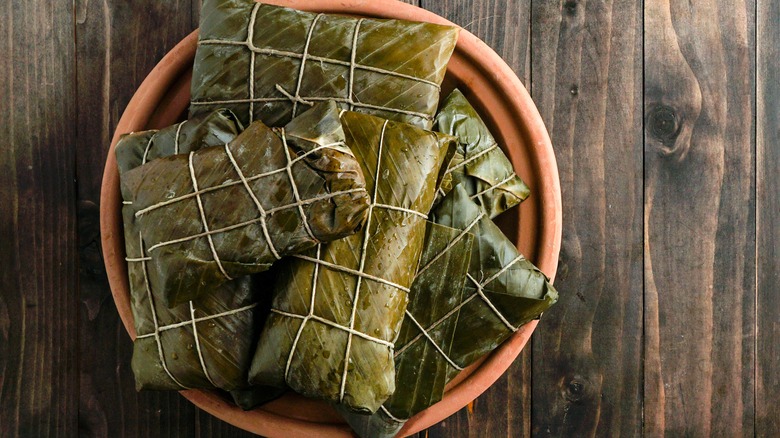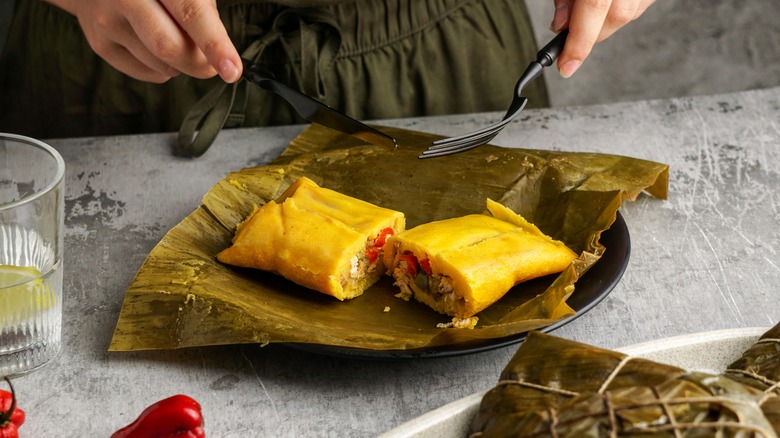Why Venezuela's Hallaca Is Pretty Much Only Made During The Holidays
It's no secret that Christmas dinners around the world can look very different. You may have heard about Japan's affinity for indulging in crispy Kentucky Fried Chicken on the holiday or the English tradition of roasting a Christmas goose. But, for many countries, tamales are the go-to holiday meal.
Corn husk-wrapped tamales are piled high on the Christmas table. Often, their interiors can be drizzled with green and red salsas that reflect the seasonal spirit. Redbook also notes that Costa Ricans enjoy partaking in tamale-eating on the holiday, along with rum cake and eggnog. But, for Venezuela, the tradition involves eating something tamale-adjacent.
Hallacas are very similar to tamales, as they're made of cornmeal dough wrapped in banana leaves. But the filling is often stuffed with either pork or chicken, along with "raisins, olives, capers, onions, and pimentos," per Redbook. While the tasty dish is often enjoyed on celebratory days across the nation, its origins are much more humble.
The hallaca holiday
According to The Hallaca Factory, the tradition of prepping the labor-intensive dish on Christmas is one cherished by many Venezuelans. The tradition is thought to have originated with the enslaved indigenous populations during the colonial era. At the time, Spanish people who enslaved others would often feed their leftover Christmas meal scraps to them. Upon receiving the food, they would wrap the scraps with cornmeal in banana leaves, and then boil and eat the dish.
Today, many Venezuelan families continue to make hallacas on the holiday. According to The World, families collect fresh ingredients Christmas morning, and the preparation begins. The array of savory ingredients, including the meat, fruits, and vegetables, are folded into cornmeal dough. Then, just as those before, it's all wrapped up in a moist banana leaf that has been soaked and boiled.
Spoon University notes that hallacas are often presented on the Christmas dinner table with butter spread on top, along with ham bread. Some families even have their own secret ingredients. And, since the process of making hallacas can last a long time, many hallacas are often made at once — many more than what's adequate for just one meal. If you can keep the deliciously fresh batch lasting all the way to the end of December, then a Christmas miracle really has occurred, as it's hard for anyone not to eat an abundant amount of hallacas in one sitting.

